Introduction
Maintaining an edible landscape requires Integrated Pest Management (IPM), an approach that is part of the Florida-Friendly Landscaping™ (FFL) program. FFL Principle No. 6, Manage Yard Pests Responsibly, incorporates IPM. IPM approaches were developed in the 1970s in response to increased knowledge about pesticide overuse. Relying on a single pest-management tactic—i.e., insecticides—produces unintended consequences, including pest resistance and negative environmental impacts. The IPM approach presents multiple management tools, coupled with the judicious use of insecticides, to suppress pests and simultaneously safeguard the environment.
In this publication we define different types of pests that a home gardener might encounter and encourage diversifying landscapes as a solution to pest problems (Figure 1). We focus on what is called “the triangle” of IPM, a guide to managing pests using multiple methods. We provide examples of IPM tools that can be applied in the home context to address these pests. Several links to resources relevant to edible Florida-Friendly landscapes are included.

Credit: Tina McIntyre, UF/IFAS
Pest Management in the Home Garden
A pest is anything that is undesired in your landscape, ranging from pathogens to insects, from plants to animals. A species becomes a pest when it surpasses your level of tolerance for the damage it is creating. IPM was developed for farmers to control pests, but home gardeners can adapt elements of IPM for their own backyards. The first step of an IPM approach entails monitoring and insect identification. It also entails assessing your personal tolerance to pest damage prior to implementing pest management tools. Tolerance is an important concept because some pest problems can be mitigated with time, patience, and the checks and balances offered by natural processes. For example, aphid pests rarely kill mature plants, and their populations can be suppressed by natural enemies. If you reach for a pesticide when you first see an aphid, you may be applying a chemical that also harms beneficial or benign organisms. Another example is the swallowtail caterpillar, which is a pest on citrus trees. It feeds on foliage and may defoliate a young tree, but it will become a beautiful swallowtail butterfly (Figure 2). Small numbers of pests such as these butterflies may be tolerable and enhance the visual beauty of your landscape. The concept of tolerance is important when considering trade-offs presented by individual pests. Finally, you can determine at what point pest-control action is warranted (called an “action threshold”) by considering what would be acceptable levels of damage to an edible crop in your yard.

Credit: Tiare Silvasy, UF/IFAS
Cultivating Biodiversity in Your Edible Landscape
Each garden has the potential to be a habitat for Florida’s unique flora and fauna. Every insect, plant, and animal are a part of a food web, and each of these organisms plays a role through interactions with other members of the food web. One important tenant of IPM is creating biodiverse landscapes that consider organismal interactions (Figure 3). Enhancing biodiversity therefore means paying attention to plant selection—if you cultivate the right plants, and plants with varying structures, colors, and bloom times, you will provide for beneficial organisms such as pollinators and predators. These beneficials often have very specific plant preferences. For example, intercropping vegetables with sweet alyssum is beneficial because alyssum attracts hoverflies, which prey on aphids (Figure 4). Diverse gardens not only attract beneficial organisms, but they are also more likely to prevent pest outbreaks and produce higher crop yields. If you consider the garden as part of a larger landscape, embracing biodiversity also contributes to creating landscape-level habitat and linking green spaces across cities to support local wildlife in the area. Finally, a well-managed landscape supports a healthy watershed and soil.
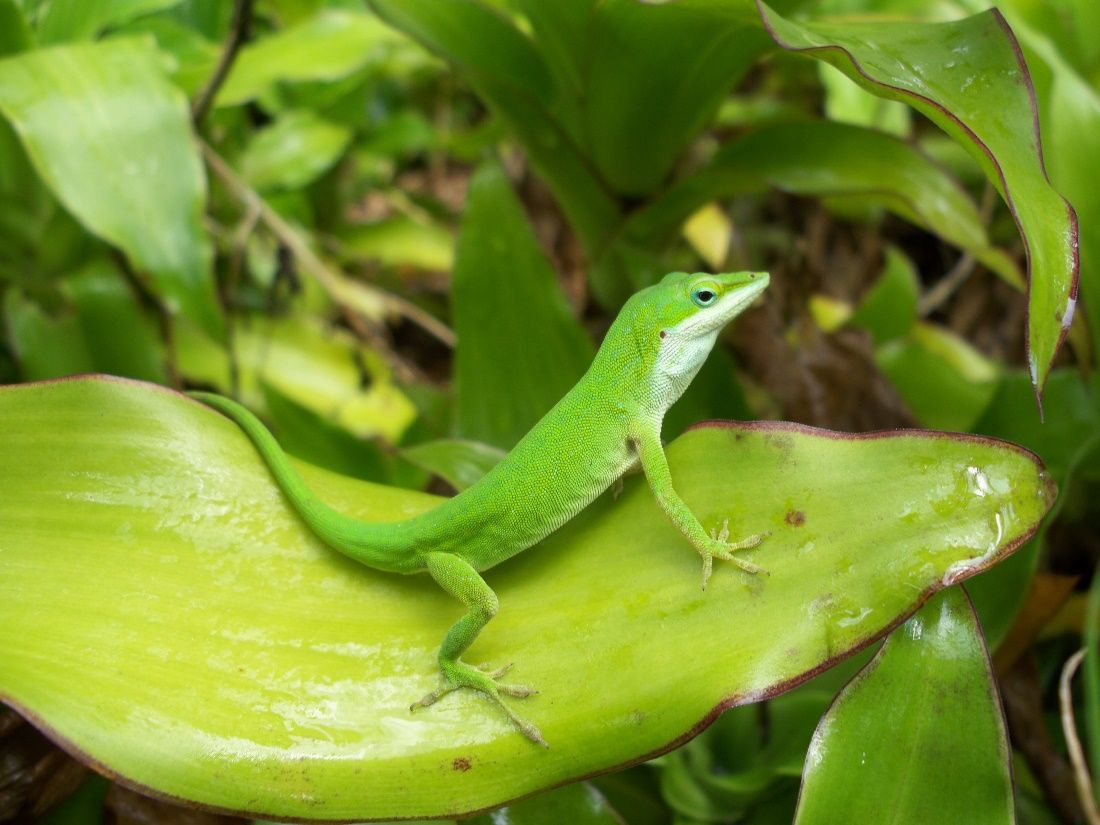
Credit: Tina McIntyre, UF/IFAS
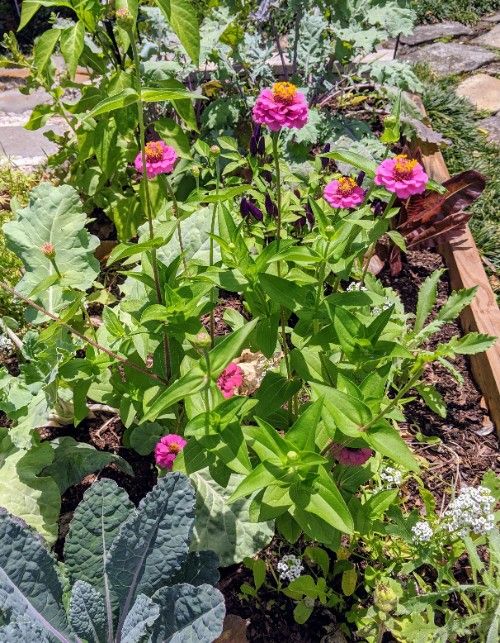
Credit: Mary Ann Pigora, Master Gardener Volunteer, UF/IFAS
The Triangle of Integrated Pest Management
Monitoring and Identifying Pests
Scouting and identification are important principles of IPM because understanding the amount and location of pests in your landscape is paramount for determining treatment. Scout between one and three times per week to get an accurate read on the insect pests, weeds, diseases, and other problems that may require treatment. Early detection is essential to creating an effective pest management plan and can prevent serious damage to your landscape. Scouting also allows you to determine if any pest control plans already in place are effective or need to be altered.
In your edible landscape, you may encounter a variety of pests. Learning to identify pests and the harm they can do is essential to treating the symptoms of the pest. By first identifying the organism you can understand its life cycle, when to expect damage, if it is a native or nonnative organism, and if it is indeed a nuisance or burden to your landscape that needs to be controlled. Identification can be challenging, but some useful resources for identifying and learning more about pests are included at the end of this document in the resources section. Your local UF/IFAS Extension office and Master Gardener Volunteer program can help you better identify insects in your landscape.
Common garden pests include insects such as aphids, ants, mealy bugs, and other organisms that may harm plants in your landscape. Insect pests can be divided into those with chewing, rasping, or piercing-sucking mouthparts. Examples of insects with piercing-sucking mouthparts include scale, aphids, spider mites, and white flies. Insects can also be categorized based on the damage they perform in the landscape. For example, defoliators, like caterpillars, tend to feed voraciously and strip a plants’ foliage nearly bare. Gall makers are insects that deform plant tissue such as leaves, stems, or twigs. Wood or phloem borers, including twig girdlers and powder-post beetles, cause damage by feeding on living wood and wooden structures. Beyond insects, garden pests also include weedy plants, such as invasive grasses, and plant pathogens, such as viruses and fungi.
Moving Up the Triangle of IPM
IPM consists of cultural, physical, biological, and chemical practices. Cultural practices are cultivation methods that suppress pests by creating an inhospitable environment—for example, reducing irrigation to mitigate root diseases and weeds, rotating crops, and intercropping. Physical controls kill a pest directly, keep pests out, or create a hostile environment for pests. Examples of physical controls include handpicking pests or using physical screen barriers. Biological controls use natural enemies of pests to control them, such as ladybugs to control aphids. Chemical practices include the use of both organic and conventional pesticides (e.g., insecticides, herbicides), which should be used only when necessary. When using chemical controls, it is important to use the most selective pesticides and consider how to minimize harm to people, the environment, and nontarget organisms. Practice chemical controls safely by following label instructions. Keep in mind that insects remaining after a chemical treatment can develop pesticide resistance to the chemical product applied, so if repeat treatment is needed, rotating products is recommended. Use the IPM triangle, starting at the bottom, to manage pests in your home garden, and escalate to the top only when necessary (Figure 5).
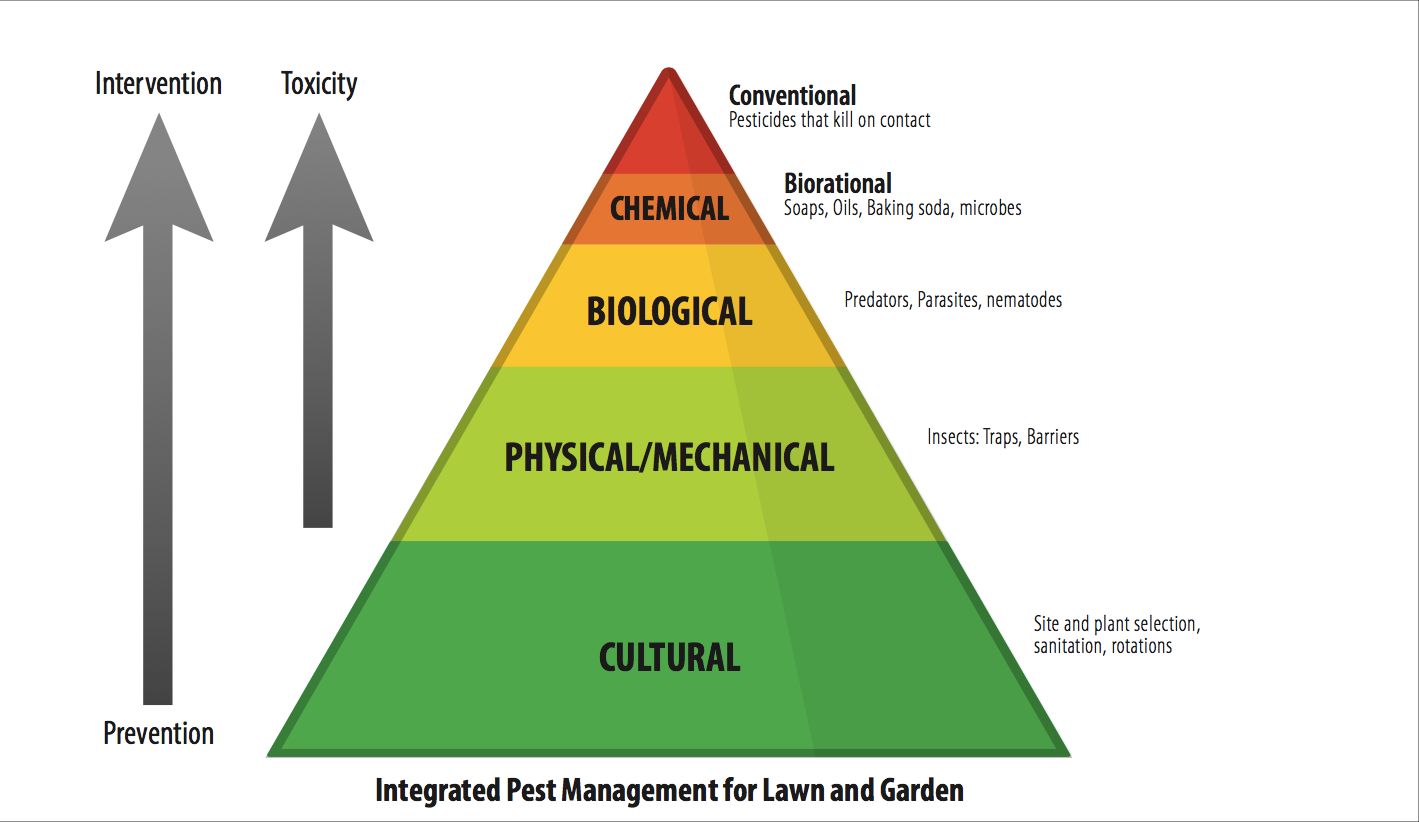
Credit: Tina McIntyre, UF/IFAS
Cultural Control and Prevention
Cultural control refers to cultivation practices, such as plant selection (Figure 6) and maintaining field conditions that reduce pests, and other preventative practices. The concept of prevention is important and underlies many cultural control practices. For example, some plants, like yellow squash, are prone to pests (Figure 7), and perhaps selecting other squash species, such as chayote, could avert infestations all together. Prevention can also be practiced by selecting plants that deter pests, such as ornamental marigolds, which secrete a toxin that can deter harmful nematodes.
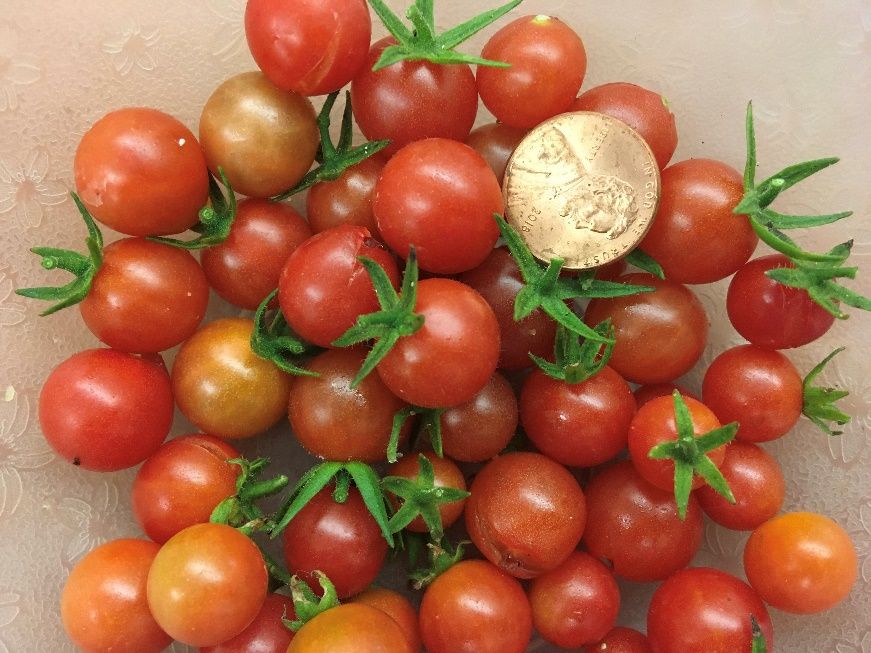
Credit: Tiare Silvasy, UF/IFAS
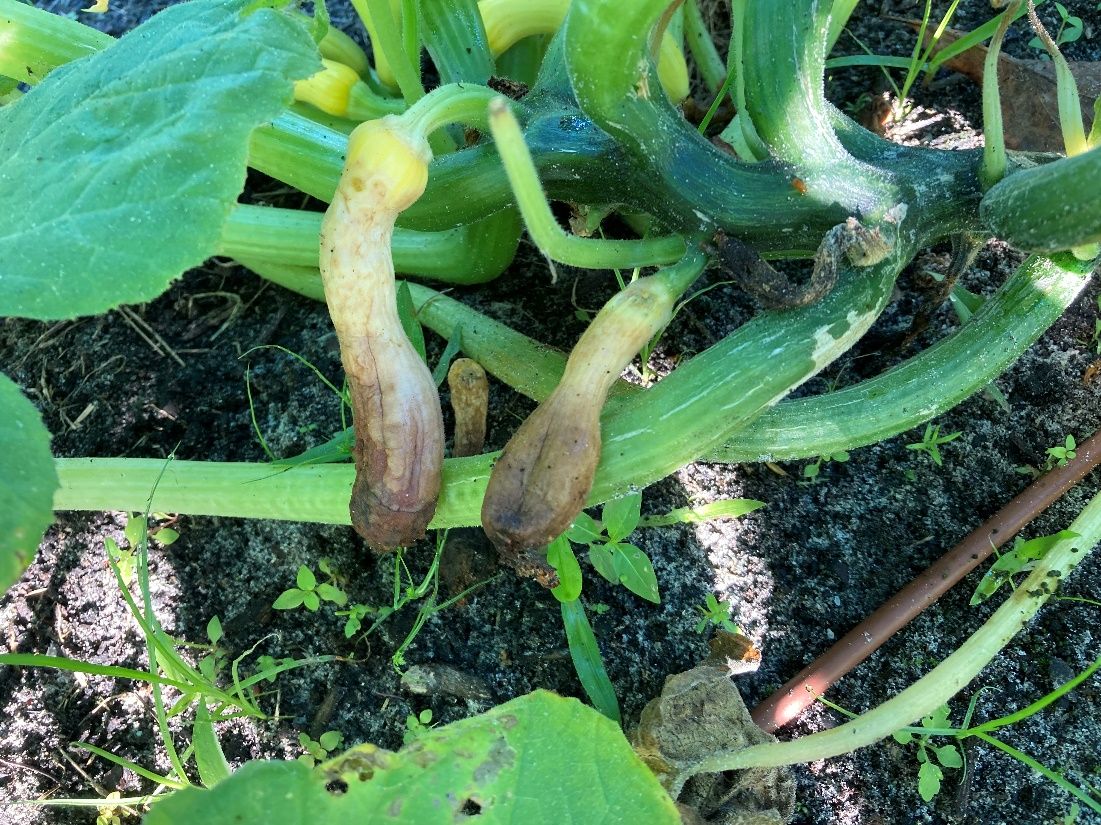
Credit: Tiare Silvasy, UF/IFAS
In general, plant decline and poor health can promote pest problems. Practices such as proper fertilizing, pruning, and watering keep plants healthy and able to fend off pests. Another good way to prevent infection and pests is to rotate crops and utilize companion planting, also known as intercropping. Because most pests are restricted to certain plant partners, crop rotation and companion planting prevent colonization of an entire field by pests and pathogens. Intercropping can add natural pest and pathogen repellants found in plants to target a specific group of pests. An example of intercropping is alternating rows of cabbage with tomatoes, dill, sage, garlic, safflower, oat, and barley, which is found to reduce damage by the diamondback moth, a major pest of the Brassicaceae family (Talekar et al. 1988).
Actions to Manage Insect Pests
- Use cultivars that are resistant to pests.
- Pick up fallen fruits under fruit trees so they do not harbor insect pests.
- Control weed vegetation and noncrop plants in the landscape that can host pests.
- Practice companion planting.
- Use row covers or cages to protect plants when they are young.
Actions to Reduce Plant Diseases
- Sanitize equipment like shovels, pruners, trowels, and gloves.
- Remove affected plants or prune infected plant tissue and discard from the cultivated site.
- Design fields and gardens with aspect and airflow in mind. For example, southern slopes get more sun and dry more quickly, reducing humidity-related disease problems.
- Use cultivars that are resistant to disease.
Actions to Manage Nuisance Plants
- Adjust crop density
- Refine tillage practices
- Maintain soil fertility
- Maintain hot compost to destroy weed seed
- Intercrop to outcompete weeds
- Cover crop in the off-season to suppress weeds
- Use mulch to prevent weeds
Physical and Mechanical Control
Physical control involves removing or killing pests by hand or using tools including barriers and traps. Physical control should be used after a pest is identified. Examples include sticky traps, a barrier of diatomaceous earth (or a material the animal cannot traverse) around plants and cutting off plant tissue infested with insects and disposing of it.
Actions to Manage Insect Pests
- Vacuum or spray pests
- Set out yellow sticky traps, or pick up and discard pests
- Remove larger pests, like caterpillars or grasshoppers (Figure 8), by hand and place into a bin of soapy water
- Set up diatomaceous earth or eggshells around plants as barriers against snails
Actions to Reduce Plant Pathogens
- Removing infected foliage is the most effective physical control of plant pathogen
Actions to Manage Nuisance Plants
- Hand weed
- Use a hula-hoe weed tool between crops
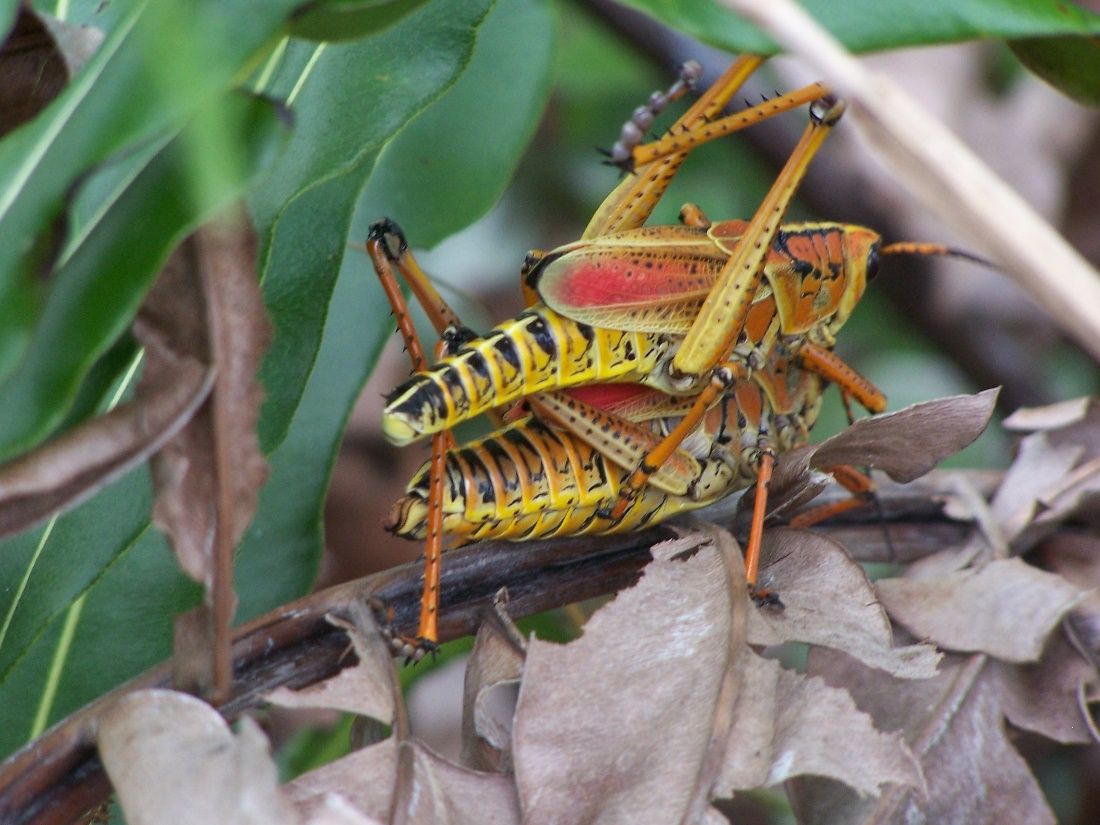
Credit: Tina McIntyre, UF/IFAS
Biological Control
Many pests have natural enemies. For example, ladybugs are natural enemies of aphid pests because they eat them. Other natural enemies include green lacewings, parasitic wasps, praying mantises (Figure 9), spiders, ground beetles, soldier beetles, and assassin bugs. Natural enemies include parasitoids, which are insects (usually wasps and flies) whose larvae feed and develop within or on the bodies of other insects (Figure 10). Natural enemies even include naturally occurring microorganisms that kill pests, such as fungi and bacteria!
Biological control refers to methods that utilize and enhance natural enemies to mitigate pest problems. Historically, IPM researchers in the United States faced with a pest problem would identify a natural enemy of that species and import and introduce this enemy, even if it was nonnative. This is called classical biological control, and today is only practiced very carefully. A successful example of classical biological control is the introduction of the larra wasp (Larra bicolor), a predator of mole crickets that was introduced to Florida from South America in the 1980s. The larra wasp has now established in the state and has kept mole cricket populations under control. There are two other forms of biological control. Augmentation biological control refers to the seasonal release of large numbers of insects that are natural enemies to your target pest. An example of this would be the release of ladybugs or lacewings to control aphid populations. Finally, conservation biological control is the promotion of beneficial insect populations through habitat enhancement. For example, although the larra wasp lays its egg inside of mole crickets, as an adult it requires pollen and nectar from flowers and even has preferences for specific plants, such as partridge pea. An example of biological control would therefore be cultivating partridge pea to promote the larra wasp in your garden.
Actions to Manage Insect Pests
- Create habitat for beneficial insects by mixing crop and fruit tree rows with insectary plants, such as white alyssum and flowering herbs: basil, cilantro and dill
- Use spinosad, a natural substance created by soil bacteria, to treat thrips, leaf miners, spider mites, fruit flies, and many other insect pests
- Use bacterial natural enemies that interfere with an insect’s reproductive cycle, such as the bacteria Bt, Bacillus thuringiensis
Actions to Reduce Plant Pathogens
- Use bacterial sprays
- Create competition by promoting healthy soils that are full of native fungi and bacteria
Actions to Manage Nuisance Plants
- Use insects and mites, targeted plant pathogens, fish, birds, and other animals
- Rent goats to eat weeds in your landscape
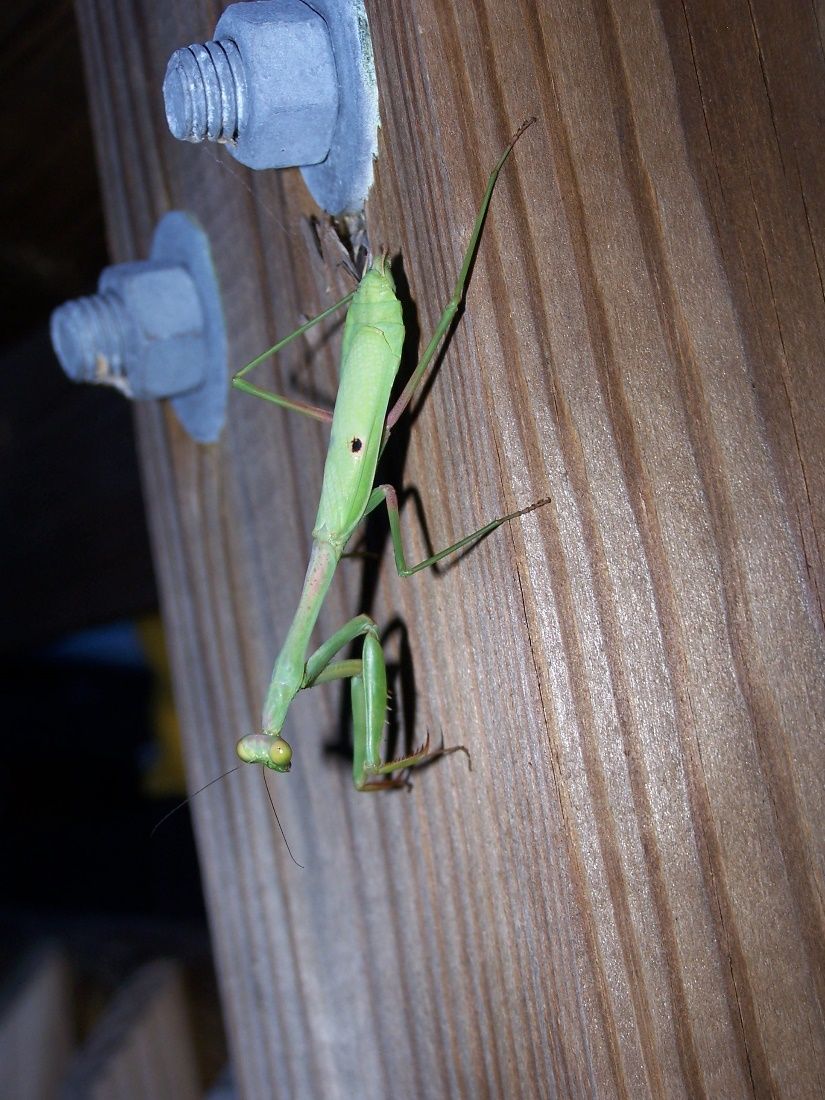
Credit: Tina McIntyre, UF/IFAS
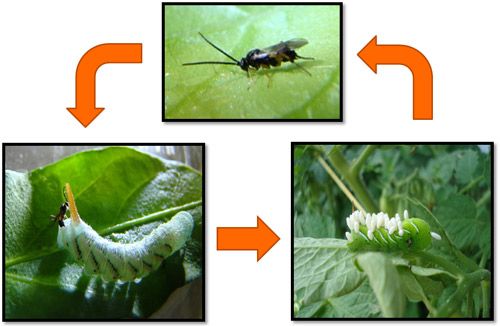
Credit: UF/IFAS
Chemical Control (Organic and Conventional)
Chemical controls can refer to organic and conventional pesticides. Certified organic chemical controls use only Organic Materials Review Institute (OMRI) products that are certified as organic; it should be noted that OMRI is a private organization. Organic chemical controls (also called biorational pesticides) include plant-based controls such as horticultural soaps or oils, like pyrethrin, a compound coming from Chrysanthemum flowers, citronella oil, a plant-based mosquito and bug repellant, and neem oil, a natural pest repellant sourced from neem trees. Conventional chemical products refer to synthetic, laboratory-designed chemicals. Common examples include glyphosate (RoundUp), an herbicide used for weed control. Both organic and conventional chemicals can cause nontarget impacts to wildlife and humans. Responsible and well-informed use of all pesticides is important to maintaining the health of the environment, and they should only be used when there are no other tools available. To read more about the hazards of chemical controls, see this list of resources from IPM Florida, UF/IFAS: https://ipm.ifas.ufl.edu/applying/Chemical_Control.shtml. For more information about chemical control in the home garden, go to Natural Products for Managing Landscape and Garden Pests in Florida: https://edis.ifas.ufl.edu/in197.
If you decide to use synthetic pesticides, apply according to the label. If a label says "restricted use," it should only be applied by a professional. Consider your own unique, local environment. For example, if you are near a body of water, do not apply certain pesticides before a rain event, because they can leach through the soil and into bodies of water.
Actions to Manage Insect Pests
- Insecticidal soaps, oils, and neem can treat harmful pests but often require repeat applications and full foliar coverage
- Conventional insecticides may be used when necessary but follow the label or hire a certified pesticide applicator
Actions to Reduce Plant Pathogens
- Plant pathogens should be chemically and bio-rationally treated after the pathogen presents symptoms and before the pathogen spreads to other plants, to minimize ecosystem disruption
Actions to Manage Nuisance Plants
- Herbicides, like “Torched,” are safe and effective when used according to label instructions, which detail application timing, rates, and methods of application. Be cautious with use around edible plants
- Choose a selective herbicide to minimize effects on surrounding plants
Conclusion
Using these principles in your backyard and rethinking your perception of pests can dramatically alter the way you manage your edible gardens (Figure 11). We recommend a Florida-Friendly approach to managing pests that incorporates the following: monitoring your edible landscape, identifying suspect pests, and enhancing biodiversity. These practices will create a more resilient home garden. When faced with pests, take action before the pest becomes out of control, and utilize the IPM triangle to determine treatment options.

Credit: Tina McIntyre, UF/IFAS
Resources List
- Florida-Friendly Landscaping™ website: https://ffl.ifas.ufl.edu/
- For more information on trap crops, see “Trap Cropping in Vegetable Production: An IPM Approach to Managing Pests”: https://ipm.ifas.ufl.edu/pdfs/trapcropsfactsheet.pdf.
- How to submit insect samples to Lyle Buss at UF Entomology: https://edis.ifas.ufl.edu/publication/sr010
- How to submit plant pathogen samples to the UF PDC: https://plantpath.ifas.ufl.edu/extension/plant-diagnostic-center
- How to submit samples to FDACS DPI: https://www.fdacs.gov/Agriculture-Industry/Pests-and-Diseases/Plant-Pests-and-Diseases/How-to-Submit-a-Sample-for-Identification
- Submitting photos: DPIHelpline@FDACS.gov
- For more information on herbicides and weed management, see Weed Management Guide for Florida Lawns: https://edis.ifas.ufl.edu/publication/EP141.
- Treatments for plant pathogens can be found at Homeowner’s Guide to Fungicides for Lawn and Landscape Disease Management: https://edis.ifas.ufl.edu/publication/PP154.
- More information on IPM control can be found here: https://edis.ifas.ufl.edu/publication/cv298.
- Landscape Pests (https://pest.ifas.ufl.edu) is a mobile app that can help identify common pests in Florida.
- To address plant diseases, see UF/IFAS Gardening Solutions, “Plant Diseases”: https://gardeningsolutions.ifas.ufl.edu/care/pests-and-diseases/diseases/.
We would like to acknowledge Lyn Barber, Terra Freeman and Tom Wichman for their contributions to this publication.
References
Borden, M. A., E. A. Buss, S. G. Park Brown, and A. G. Dale. 2018. “Natural Products for Managing Landscape and Garden Pests in Florida.” EDIS 2018 (5). https://doi.org/10.32473/edis-in197-2018
Center, T. D., W. A. Overholt, E. Rohrig, and M. Rayamajhi. 2015. “Classical Biological Control of Air Potato in Florida.” EDIS 2013 (1). https://doi.org/10.32473/edis-in957-2012
Collier, T., and R. Van Steenwyk. 2004. “A Critical Evaluation of Augmentative Biological Control.” Biological Control 31 (2): 245–256. https://doi.org/10.1016/j.biocontrol.2004.05.001
Githinji, L. 2017. “Companion Planting in Gardening.” Virginia Cooperative Extension, Sustainable and Urban Agriculture Series. https://static1.squarespace.com/static/56bb6533c2ea51c6431244f6/t/5995a653f14aa147e173a5dd/1502979667522/Companion+planting+Revised.pdf
Krishna Pal, K., and B. McSpadden. 2006. “Biological Control of Plant Pathogens.” The Plant Health Instructor. https://doi.org/10.1094/PHI-A-2006-1117-02
Liu, G. D., E. H. Simonne, K. T. Morgan, and G. J. Hochmuth. 2018. “Soil and Fertilizer Management for Vegetable Production in Florida.” EDIS 2015 (1). https://edis.ifas.ufl.edu/cv101
Marble, C., and A. Koeser. 2022. “Improving Weed Control in Landscape Planting Beds.” EDIS 2015 (6): 6. https://doi.org/10.32473/edis-ep523-2015
McAvoy, C. E., and A. Whidden. 2016. “Integrated Pest Management and Control Measures.” Citrus Industry, February 2016, 36–38. https://crec.ifas.ufl.edu/media/crecifasufledu/extension/extension-publications/2016/2016_February_integrated.pdf
National Pesticide Information Center. 2015. “Spinosad.” http://npic.orst.edu/ingred/spinosad.html
Park Brown, S., D. Treadwell, J. M. Stephens, and S. Webb. 2021. “Florida Vegetable Gardening Guide.” EDIS 2015 (9): 11. https://doi.org/10.32473/edis-vh021-2015
Rivas, J., T. Silvasy, L. Harlow, L. Barber, J. Marvin, E. Momol, T. McIntyre, and T. Freeman. 2022. “Efficient Irrigation for Florida-Friendly Edible Landscapes.” EDIS 2022 (1). https://doi.org/10.32473/edis-ep617-2022
Talekar, N., S. Lee, and S. Huang. 1986. “Intercropping and Modification of Irrigation Method for the Control of Diamondback Moth.”
UMass Extension Agriculture and Landscape Program. 2017. “Companion Planting in the Vegetable Garden.” https://ag.umass.edu/sites/ag.umass.edu/files/fact-sheets/pdf/companion_planting.pdf
Wang, Z.-Z., Y.-Q. Liu, M. Shi, J.-H. Huang, and X.-X. Chen. 2019. “Parasitoid Wasps as Effective Biological Control Agents.” Journal of Integrative Agriculture 18 (4): 705–715. https://doi.org/10.1016/s2095-3119(18)62078-7
Webb, S. E., and F. A. Johnson. 2019. “Insect Management in the Home Garden.” EDIS 2006 (6). https://edis.ifas.ufl.edu/publication/VH036
Wezel, A., M. Casagrande, F. Celette, J.-F. Vian, A. Ferrer, and J. Peigné. 2014. “Agroecological Practices for Sustainable Agriculture. A Review.” Agron. Sustain. Dev. 34:1–20. https://doi.org/10.1007/s13593-013-0180-7